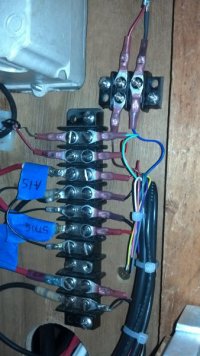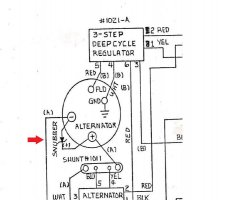Designed for endurance rather than large continuous loads
Flat serpentine belt and pulley kits are also sold for these engines. I noticed them while shopping for my new "high output" 90 amp alternator. I think one of the places was AC/DC Electric.
Holly cow! You must have an electronic "forest" on board to use all that power! At full output that alternator will absorb a lot of horsepower.
We have a forest of wires behind the AC and DC panels, but you can see the trees. I attached some sample photos. There's no hot tub or anything, but the PO had a goal of going two days and nights away from shore power without charging the batteries. Using a mixture of halogen, incandescent and fluorescent lighting, a radio, the shower (water pressure pump, shower bilge pump) and domestic water for two days would put some demands on the storage and charging system. They liked their quiet as much as the rest of us. His solution was the extra house batteries and the large alternator.
The batteries are 13 years older now and we have added the diesel heater, which pulls about 3 amps at full fan speed. These days we really have to run the engine about every 24-30 hours. After two nights at anchor we are usually ready to move on anyway so the charging is sometimes done while motoring or motor sailing to the next overnight spot. Future plans call for some solar help and completing a conversion to LED lighting.
Vintage 2003 brokers photo. Nice AC and DC panels.
1990s Raytheon radar and chart plotter.
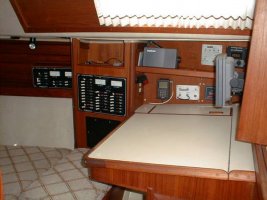
Behind the DC Panel. Labeled, waterproof, tied neatly.
The boat cables I added during the nav update are labeled on the white cover.
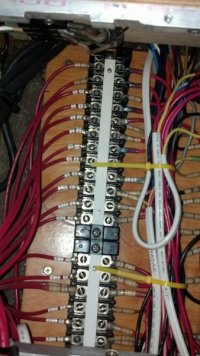
NMEA 0183 Signal patch strip before nav update. Note the ground bus on the left.
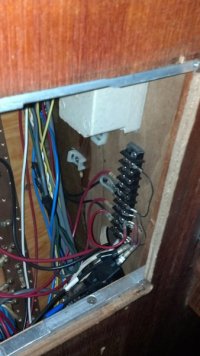
NMEA 0183 Signal wires patch strip after the 2014-15 nav update
